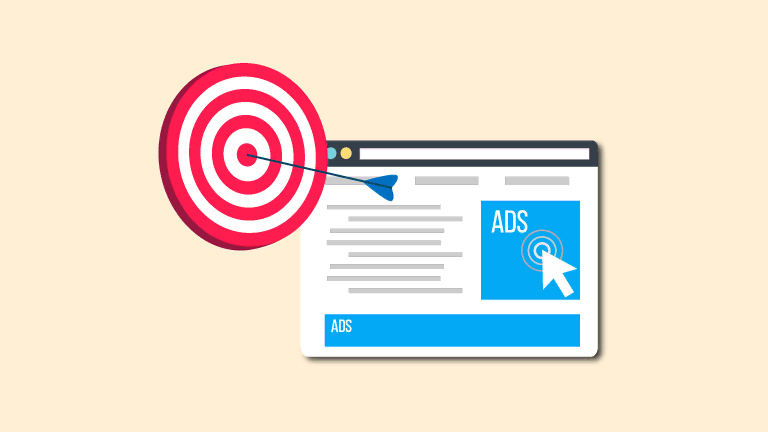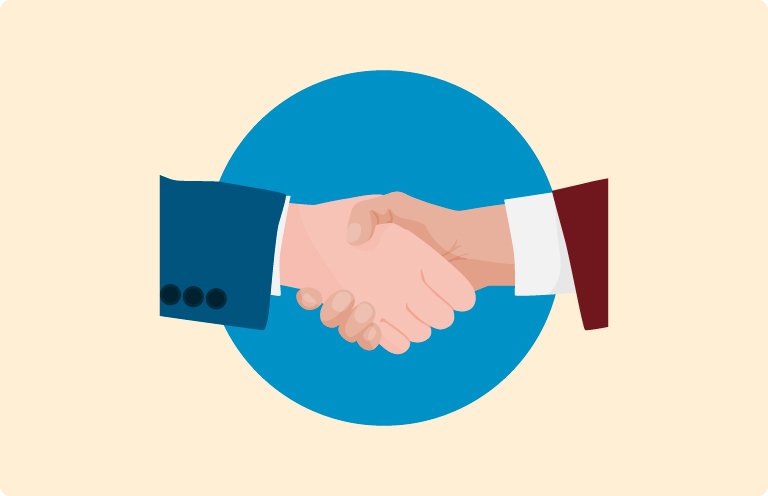Conversion rate: the guide to follow in 2025

A crucial aspect of managing a website or web shop is optimizing the conversion rate ón this platform. A high conversion rate means that a higher proportion of visitors take action, such as buying a product, signing up for a newsletter or requesting a service. In this article, I’ll dive into the strategies and best practices you can employ to increase the conversion rate of a website .
The importance of conversion rate
The conversion rate is an important number you can use to determine how successful your website is among your target audience. As a business owner, you not only want individuals to visit your website, but you also want them to take some action (conversion). The conversion rate, also called the conversion rate or in English conversion rate, herein provides insight into the percentage of visitors who convert.
When you properly analyze the results of your research, the conversion rate can be very informative. You can use these to determine necessary adjustments in your online marketing.

Getting started on improving conversion rates?
Contact me to work together on your website’s conversion rate.
What is the conversion rate?
The conversion rate is a method of tracking in Google Analytics how successful your website is in converting visitors(1). Simply explained, conversion rate refers to the number of visitors than take a particular action, divided by the total number of visitors.
Conversion often refers to making a purchase, but not necessarily so. In addition to being a transaction, it can also be a goal. For example, downloading a document or signing up for a newsletter.
Want to read more about conversion rates?
- Conversion (definition)
- What does a CRO specialist do?
- Conversion rate optimization for a web shop
- The influence of SEO on UX
- The psychology of search intent
- Increasing the conversion rate of a website
A challenge for online entrepreneurs
When a potential customer proceeds to purchase a product or some other action, we speak of conversion. Transactions have a direct impact on your sales. We also call the other conversions soft conversions or leads. These indirectly affect your sales.
Your visitor then shows interest, but does not yet take an official step to become a customer. Achieving and maintaining a favorable conversion rate is a challenge for all online business owners. Web shops convert relatively worse than physical stores because potential customers do not have to put any effort into their visit.
This is what a good conversion rate looks like
It has been agreed for years that a good conversion rate is between 3 and 4 percent. These seem like low numbers, but you’re doing really well on average with these. So this means you still have a good conversion rate when 3 or 4 out of 100 visitors proceed to a purchase. By the way, what constitutes a good conversion rate is not the same for all industries and websites.
Webshops in certain segments -think of clothing stores, for example- have a lower conversion rate on average. Visitors often view these pages for pleasure and not always with the direct intention of purchasing something.
The conversion rate in perspective
So what constitutes a good conversion rate depends largely on the product group, season and region. We must also remember that conversion rate alone is not the holy grail. Although this number is certainly important, we may also scrutinize things like average order amount and return rate to make an informed statement about a company’s online success.
Are few people buying your products, but the value per order is high? Then you may end up doing better than the entrepreneurs with only a high conversion rate.

Getting started on improving conversion rates?
Contact me to work together on your website’s conversion rate.
The average conversion rate by industry
The conversion rate on a website can vary significantly by industry, depending on several factors such as the product or service being offered, the price, the quality of the website and the marketing strategies being used.
It is important to note that it is difficult to give exact figures without access to recent and specific data, as these figures are constantly changing and can vary greatly. However, below is an overview of estimated average conversion rates by industry according to a study by WordStream in 2020. These figures are only guidelines and may vary:
| Industry | Average conversion rate |
|---|---|
| Advocacy & legal services | 6.98% |
| Health care & medical services | 3.39% |
| Education | 2.78% |
| E-commerce | 2.63% |
| Business services | 2.39% |
| Technology | 2.55% |
| Automotive | 2.27% |
| Travel & hospitality | 2.57% |
| Real Estate | 2.47% |
| Nonprofit | 2.09% |
It is important to note that these figures are averages and there can be significant variation within each industry. Optimizing your website and marketing strategy can help you rise above these averages and improve your conversion rates.
How to calculate the conversion rate
The conversion rate is calculated by dividing the number of conversions by the total number of website visitors. More specifically, you divide the number of transactions or leads by the number of visitation sessions and multiply this number by 100. Do you have 300 visitors on any given day? And did 20 people order something?
Then the calculation is as follows: 20 conversions / 100 visitors = 0.066 or a conversion rate of 6.6%. And do you want potential customers to sign up for the newsletter? Then we divide the number of entries by the number of times the page was visited and multiply by 100.
Branded vs. non-branded conversions
Branded traffic: This refers to visitors who come to a Web site by searching for specific brand-related terms, such as your company’s name or your specific product names. These visitors are often already familiar with the brand and have a clear intention.
Non-branded traffic: These are visitors who land on a site by searching for general, non-branded terms or queries. They may be looking for a product or service you offer, but are not specifically looking for the brand. This type of traffic is often greater in volume, but conversion rates tend to be lower compared to branded traffic. These users are in the discovery phase and may need more convincing about the value of the brand or product.

Getting started on improving conversion rates?
Contact me to work together on your website’s conversion rate.
For an effective digital marketing strategy, it is important to recognize and optimize both types of traffic. For branded traffic, the focus is on strengthening brand loyalty and facilitating purchase processes. For non-branded traffic, the emphasis is on brand awareness, providing valuable information and building consumer trust. It is crucial to tailor the user experience and message to the visitor’s intent and familiarity with the brand to improve the overall conversion rate of the website.
An accurate analysis of conversion
Determining the conversion rate according to the above calculation seems like a simple task. However, it is more complicated than thought. For example, for your calculation, do you use the number of different users or the number of sessions?
This can already make a big difference. You can optimize conversion rate accuracy in Google Analytics by applying filters. For example, you can also select by micro conversions or macro conversions.
How do you interpret your conversion rate?
But your target audience also matters. If you are an entrepreneur with a Dutch website, you may of course receive visitors from abroad. Especially when you also have an English-language page.
These visitors are significantly less likely to convert. To avoid getting a distorted picture of your conversion rate, it’s better to choose to exclude visitor sessions from abroad. And what do you do with those who visit your page several times before making a purchase? Does each visit count as a session, or do you differentiate on a customer basis?
Increasing the conversion rate of an online store
Increasing conversion rates is a goal for numerous business owners. However, you should avoid setting this as an end in itself. After all, you don’t just want to achieve the highest possible ratio now, but customers who make a long-term commitment to you. So think carefully about what your ultimate goal is.
The best way to increase your conversion rate in the short term in obviously providing a (hefty) discount. Price simply plays a decisive role for most customers today. The question, however, is whether this is desirable and sustainable.
Improve your conversion rate in the long run
So focus primarily on increasing your conversion rate in the long run, even if this is a less straightforward process. To achieve this, you need to take several steps. Consider, for example, thorough website analysis, user testing and A/B testing, as well as other optimization techniques.

Getting started on improving conversion rates?
Contact me to work together on your website’s conversion rate.
For long-term effects, you will need to work on your SEO(2). Consider valuable content, an easy navigation structure and a fast loading time of your website(3). But also be as customer-friendly as possible: for example, offer different shipping options and provide an easy return process.
Average conversion rate by industry
As mentioned earlier, no general statement can be made regarding a good conversion rate. This depends on the region, among other things, but largely on the industry in which your business falls. Below you can see the average conversion rate of some industries.
| Industry | Conversion Rate |
|---|---|
| Clothing | 2,77% |
| Art and culture | 4,51% |
| Electronics | 3,16% |
| Hospitality | 4,74% |
| Health | 4,63% |
| lawyers | 7,45% |
| Brokers and mortgages | 3,40% |
| Travel | 3,95% |
| Cars | 7,98% |
These figures show that the conversion rate is high when people search for something targeted (car, lawyer). Industries in which people visit websites “for fun” without necessarily having a specific buying intention (clothing) have lower conversion rates.
Using conversion optimization to turn more visitors into customers
As a business owner, you want your website or online store to be easy to find. Especially considering that there are countless providers within each industry. Providers each trying to make their mark online.
Want to get ahead of your competition and convert more website visitors? Then get to work on conversion optimization. Improving your website with a carefully crafted strategy aims to turn more visitors into customers. A search engine marketing agency can serve you well in increasing your conversion rate.
Frequently Asked Questions
What does conversion rate mean?
When people talk about conversion rate, they are talking about a technique for checking in Google Analytics how successful your website is in converting visitors. So it’s really about the number of visitors who take a particular action and then divided by the total number of visitors. There are many people who have no idea what to do with this, but as an SEO specialist, I know what to do with this.
This is because it is important to know how many visitors you get to your website who take a particular action. You can then track exactly what they are doing and when that action is taken. Suppose people stop at one point every time, where would the problem lie? That can then be looked at specifically and then you can do something about it.
Your goal is to get as many people to your website as possible, but you also want them to take action, to make a purchase, for example. To achieve that goal, you need to know how that they think and how that visitors are now making choices on your website.
What are the benefits of a high conversion rate?
Many people think that the conversion rate does not matter, but they are wrong. I know from experience that it is actually an important number because it allows you to determine how successful your website is among your target audience. As a business owner, you want your website to be visited, but you also want people to take an action (conversion). Then when you start analyzing the results properly, the number can be very interesting.
Adjustments can then be made within online marketing, for example. When it comes to marketing, there are very many options and strategies that can be followed. I know from experience that it is important to take a close look at what fits your target audience and industry. So I will respond to that if you choose to outsource the work to me.
If your conversion rate is high, that means you have a lot of visitors on your website who proceed to make a purchase. But then you have to ask yourself is that true in the long run? Did you perhaps have an action recently that made the number so high?
How do I increase my conversion rate?
For many online business owners, achieving and then maintaining a favorable conversion rate is a challenge. Many business owners have a goal of increasing their conversion rate. But you should not have this as your main goal is my opinion. After all, it’s not just about wanting to achieve the highest possible ratio only now. On the contrary, you want to make a long-term commitment with customers.
If you want to increase your conversion rate in the short term then you can give a big discount. But whether you can keep that up for long? For the short term, it can work. I’m more for increasing the conversion rate for the long term. This does require a number of steps. You need to do (or have done) a thorough website analysis, but also consider user testing and A/B testing and other optimization techniques.
Long-term effects also involve SEO, such as valuable content. A fast site loading speed is also important, as is a good navigation structure. If you have questions about that or you would like to outsource that work, you can always approach me and I will be happy to help you.
Should I hire a specialist if I want to increase my conversion rate?
It is possible to hire an SEO specialist if you want to increase your conversion rate. You may have no experience with this term yourself, but recognize that it is very important to do something with it. This may be the reason you could use my help.
You may want to try it yourself first, but it may ask a lot of you. It’s all new and quite specialized because you also have to do certain studies in order to respond properly. Therefore, most people make the choice to hand it over to a specialist anyway.
An SEO specialist can perform a thorough website analysis for you and take a closer look at user testing and A/B testing and any other optimization techniques. This is really the work of the specialist and for this you have come to the right place. Therefore, I am happy to help you and will share my knowledge with you. That way you know in advance what I can do for you and why I can help you increase your conversion rate.
What tools can I use to measure my conversion rate?
You can calculate the conversion rate if you start dividing the number of conversions by the total number of visitors to your website. It seems simple, but you have to calculate it very accurately and for that you can use Google Analytics and then optimize everything by applying filters. Most people will use Google Analytics because it is the most pleasant tool to work with when it comes to conversion rates.
There are still a number of tools you can use, but I recommend working with Google Analytics. If you’ve been working on your website more, chances are you already know this tool and know a little bit about how it works. You can easily take an online course to use this tool and then you will also get more information about your conversion rate.
It is interesting to optimize your conversion rate because it also affects SEO. So my advice is to map the data so that you know where your areas for improvement lie. This can then be addressed by you or a specialist.
Does conversion rate impact SEO?
If you’re going to optimize your conversion rate, it matters for the effects on SEO. If you have a clear goal in mind, then you also naturally know what conversions you want to focus on. You use data to map out how your website is performing and then you can act accordingly. You will figure out where it might be going wrong and then you can focus on that and adjust what you do.
Yet that can still be tricky, because you have to know what steps to take to improve it. Fortunately, you are not alone, as I can assist you in this as an SEO specialist. I can answer any questions you have about this, I can give you advice on how to interpret your data. But I can also make necessary adjustments or improvements to your site.
If you don’t have time for it yourself or don’t feel like it, then I recommend that you choose to do the same. After all, the conversion rate impacts SEO, and every business owner wants to be able to get the most out of that, right?
Is a high conversion rate only important for web shops?
A good conversion rate, what should you imagine? The ratio should then be between 3-4%. It seems low, but on average this is excellent. So it means that 3-4 out of 100 visitors proceed to a purchase. But I cannot say what is a good conversion rate for your industry, it also depends on the product group, as well as a particular region and sometimes season.
So I can make some sense of this, but it’s really so personal that I would have to sit down and give you some advice in that. Of course, I am happy to make time for that so that I can be of further service to you. A high conversion rate is important not only for web shops, but also for websites. Even then, you want people to proceed to a certain action, such as contacting you or requesting a quote, for example.
So for web shops and website, a high conversion rate is important, but the main thing is to get it right in the long run. Only responding to the short term is equally effective, but you won’t reach your goals with that.
What is a soft conversion?
The moment a potential customer proceeds to purchase a product or takes some other action, that is a conversion. As a result, a transaction directly affects your revenue. You also have other conversions and those are the soft conversions (leads). These indirectly affect your sales. You notice that your visitor is showing interest only not yet taking a step to become a customer.
It’s interesting to take a closer look at soft conversions, what could be the reason they are showing interest but not going ahead yet? What could you change that would still make customers take that one step further, i.e. achieve your goal? I would love to take a look at that with you, because from there you can also better optimize your website and respond to the needs of (potential) customers.
Leads matter to your website, which is why it makes sense to look at them in detail. They may only have indirect influence, but it is important information that you can do something with as an entrepreneur.






